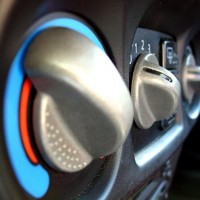Even with the end of summer approaching, your Mercedes air conditioner will still be needed for those  occasional hot days before the weather cools for the year. Leaks can develop in the hoses over time, and the sooner a leak is located, the less coolant will be released into the atmosphere. The most common detection methods are:
occasional hot days before the weather cools for the year. Leaks can develop in the hoses over time, and the sooner a leak is located, the less coolant will be released into the atmosphere. The most common detection methods are:
- Bubble Test – placing diluted liquid dish soap over an area of suspected leak will bubble up to reveal the leak. Especially effective for large leaks.
- Dye Test – inert dye is introduced into the coolant system to visually locate any leaks.
- Electronic Test – heated diode testers detect gas leaks and provide the most reliable and sensitive foor detecting leaks.
Overcoming Residue Tension
To mimic the higher pressure of an operating system, some technicians will use a combination of the chorine based refrigerant, R-22 and nitrogen gas under pressure. Both components of this pressurized test system are ecologically safer than freon. For this reason, using the R-22 with N is preferred to the repeated re-filling of the system with Freon while attempting to find system leaks. The addition of appropriate amounts of the R-22 + N overcomes the residue surface tension, allowing for electronic detection of the leaks.
R-22
Used to displace (break) the residue tension, R-22:
- is oil-soluble and displaces built-up residue, opening the leak path
- is more easily detected with electronic detectors than HFCs
- is not a visual test, so is perfect in enclosed spaces
- will not a cross-contaminate refrigerant systems (HFC, CFC , etc.)
Used to pressurize the air conditioning system, N:
- is inert
- is dry
- is non-flammable
- will not combine with refrigeration oil when evacuated afterwards
All existing refrigerant is within the system be recovered properly, and a 102mm (about 4″) mercury vacuum drawn on the system.


Great service and great mechanics